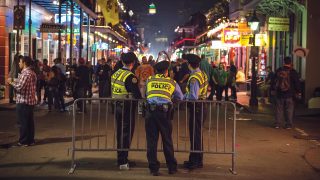
More than ever, law enforcement is facing challenges that demand more than traditional thinking and problem-solving approaches. Some crimes have become increasingly complex and difficult to solve (consider cybercrimes or the intricacies of investigating financial crimes). Expectations for law enforcement problem-solving have never been higher, and methods for increasing effectiveness in pursuit of catching the bad guy must be updated. Police officials are increasingly relying on critical thinking methods when addressing the challenges they face.
Critical thinking is a process of conceptualizing, analyzing and evaluating information gathered from observation, experience, reasoning and communication. It means pouring your entire self into being a human information analyzer. A more direct definition of critical thinking is “thinking in a nonlinear fashion.”
Today’s law enforcement officers must be more adaptive and open to divergent points of view.
The bread and butter of law enforcement has always been solving crimes. We gather evidence from a crime scene, and the process begins. According to FBI statistics, police across the U.S. have experienced a decrease in crime solvency since 2013. For example, in 2022, clearance rates for violent crimes were at 36.7% and only 12.1% for property crimes. While these statistics are certainly complicated by factors such as lack of cooperation from victims or the death of suspects, we as law enforcement professionals must also accept our own responsibility. We must rethink our investigative approaches and efforts to get back on track. This is where critical thinking comes into play.
Today’s law enforcement officers must be more adaptive and open to divergent points of view. Imagine trying to solve a homicide with very few clues and no known suspects. The possibilities are endless when it comes to options for pursuing the case — follow-ups, interviews, photographs, evidence reports, lab reports, etc. Employing critical thought is essential. We must expand our investigative horizons. One approach may involve utilizing three basic steps in critical thought: research, asking questions and analyzing answers.
Research
As law enforcement officers, we are often spoiled with an abundance of information. We can access databases, look at criminal records, review old case files, examine CompStat data, search for similar methods of operation, etc. It all starts with a simple bit of research: look at the crime, dissect it, make relevant determinations, analyze the evidence and consider who is likely to commit such violations. Break out the books and read about those types of crimes and the individuals who typically commit them. What does the evidence say? Is it one person, or are there likely several involved? Nothing should be tossed out until it can be definitively ruled out.
Research should be viewed as a multifaceted task. While we can certainly research one particular area of a case, expanding the topics can often be beneficial. For instance, let’s say you’re working on a check fraud case that involves more than one location and multiple bad checks. Are the cases related? Are there enough similarities to rule out several perpetrators, or is it one person doing it all? Don’t immediately dismiss the possibility of a criminal gang at work here. Research the case from various angles — as several incidents involving different people, as multiple incidents involving a criminal organization or as the work of one person hitting several spots. It’s amazing what conclusions you can draw by multifaceted research.
Ask questions
Asking questions is the most basic of police activities. According to Albert Einstein, “The important thing is not to stop questioning.” The answers to questions, when corroborated with the evidence, can usually solve the average crime. When you have no witnesses to talk to, you have to look elsewhere for the information you need. Seek out experts in the areas where you lack in-depth knowledge. For instance, if you are investigating a homicide involving a vehicle, reaching out to an accident reconstructionist makes sense — they can help you interpret the yaw marks or notice something in the photos that you may have missed. If you’re working on a particularly difficult financial crime, what’s wrong with talking to a CPA? The information an accountant can provide might just be what you need to at least know which avenue of investigation to pursue. What about a crime involving serious physical injuries? Seek out qualified medical personnel who’ve seen that kind of damage before — perhaps an ER doctor or nurse. Your first stop might even be other investigators who frequently deal with those types of crimes. The possibilities are endless, just open your mind to them, and they will come.
Analyze answers
Not all answers are right, and not all are completely wrong. By analyzing and evaluating the answers you’re getting, you can separate the proverbial wheat from the chaff. Look at each answer independently and carefully weigh it against the evidence and other information you’ve collected so far. If it makes sense, add it to the possibilities box. If not, toss it aside — at least for now. You never know when you might need to return to it, or if another investigator down the line might find it useful. This is where logic is applied liberally. Utilize your supervisor or other investigators to help you sort it out.
The truth of the matter is that some crimes will go unsolved. No amount of critical thinking is going to clear every case. In fact, many crimes are solved by luck or happenstance. Those cases are great, but too many of them can create a certain level of expectation and complacency. If you want to be a more critical thinker, the onus is on you. You can improve your critical thinking process through practice. Something as simple as working on puzzles in your free time can help. Moreover, there are plenty of resources online to help you develop your critical thinking skills. As a default, just remember to keep your mind open to new concepts and possibilities.
As seen in the August 2025 issue of American Police Beat magazine.
Don’t miss out on another issue today! Click below:





